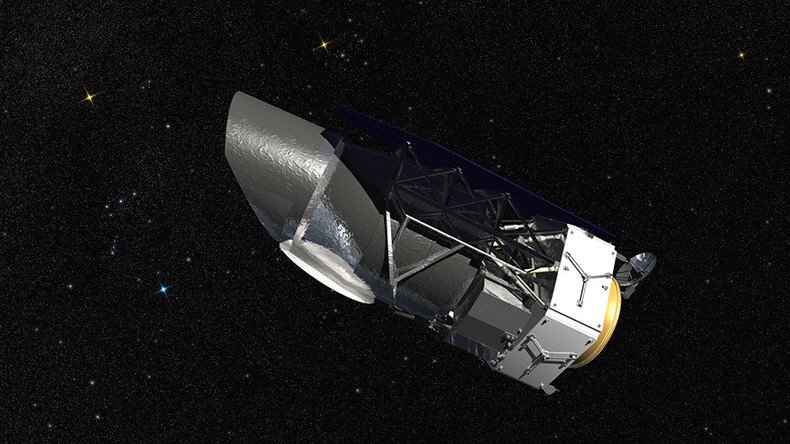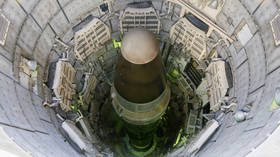NASA to explore wonders of the universe with telescope 100 times bigger than Hubble (VIDEO)

NASA is on a mission to unlock the secrets of the universe with its new Wide Field Infrared Survey Telescope (WFIRST), as the agency formally begins work on the major astrophysics observatory.
The view will be an impressive 100 times greater than NASA’s Hubble Space Telescope, launched in 1990, and is expected to help scientists “unravel the secrets of dark energy and dark matter,” according to NASA.
NASA have dubbed the new telescope a “wider set of eyes on the universe.”
Meet our new telescope! @NASAWFIRST will help unlock the secrets of the universe. Details: https://t.co/0rU3VYCdxppic.twitter.com/hQYmEcsS3f
— NASA (@NASA) February 18, 2016
“This mission uniquely combines the ability to discover and characterize planets beyond our own solar system with the sensitivity and optics to look wide and deep into the universe in a quest to unravel the mysteries of dark energy and dark matter,” said John Grunsfeld, astronaut and associate administrator of NASA’s Science Mission Directorate at Headquarters in Washington.
Dark matter is invisible material that is believed by most astronomers to account for around five-sixths of the matter in the universe. Dark energy is a mysterious, negative pressure that has been speeding up the expansion of the universe.
READ MORE: Splash test dummy: NASA test-crashes new Boeing Starliner
Astronomers will employ multiple techniques along with WFIRST to track how dark energy and dark matter have affected the evolution of the universe.
With a primary mirror 7.8 feet (2.4 meters) in diameter, the WFIRST will also explore the evolution of the cosmos and discover new worlds outside our galaxy.
The mission is being led by NASA’s Goddard Space Flight Center in Greenbelt, Maryland, while the telescope is being managed by NASA’s Jet Propulsion Laboratory in Pasadena, California.
The WFIRST observatory will survey large regions of the sky in near-infrared light.
It will carry a Wide Field Instrument for surveys, and a Coronagraph Instrument designed to block the glare of individual stars and reveal the faint light of planets orbiting around them.
The telescope’s sensitivity and wide view will also allow a large-scale search for exoplanets by monitoring the brightness of millions of stars in the crowded central region of our galaxy, according to NASA.
It’s promised to be one of the most powerful telescopes of the near future, pivotal to US space discovery.
It’s official! WFIRST has begun formulation.... https://t.co/ARH4dlxn1c
— WFIRST (@NASAWFIRST) February 18, 2016
“For me it’s a really exciting opportunity to play a significant role in a mission that I think will be one of the most powerful telescopes that we’ll have in the 2020s and will be some of the most important things our country does in space in that timeframe,” said David Spergel, theoretical astrophysicist at Princeton University.
WFIRST is due to launch in the mid 2020s, following on from the launch of another major astrophysics laboratory, the James Webb Space telescope in 2018.
The observatory will begin operations after travelling to a gravitational balance point known as Earth-Sun L2, which is located about one million miles from Earth, on the side directly opposite the Sun.












